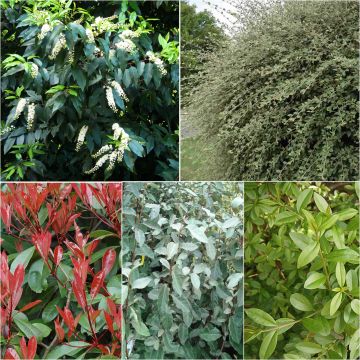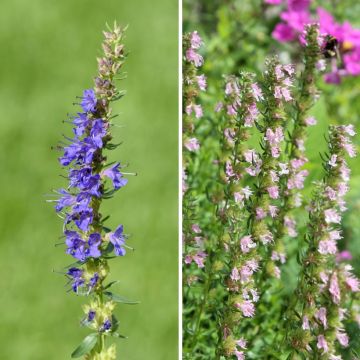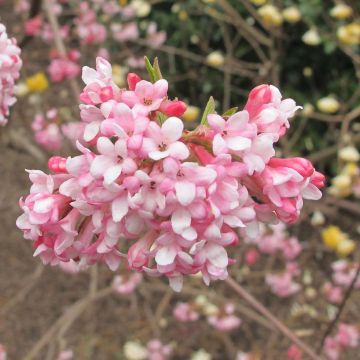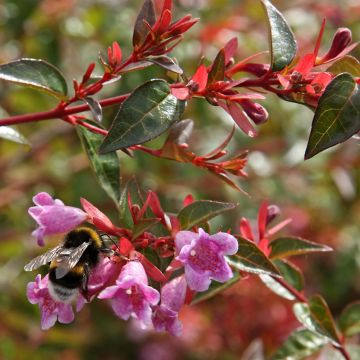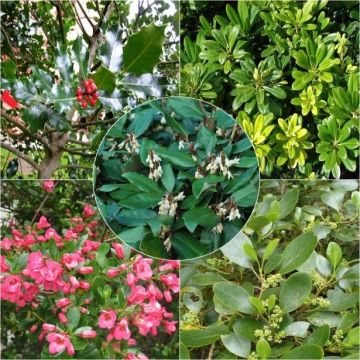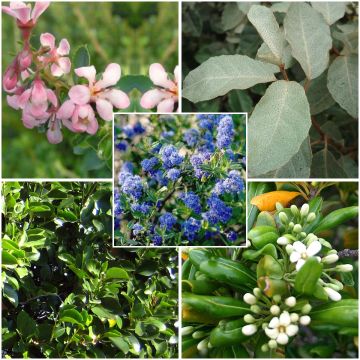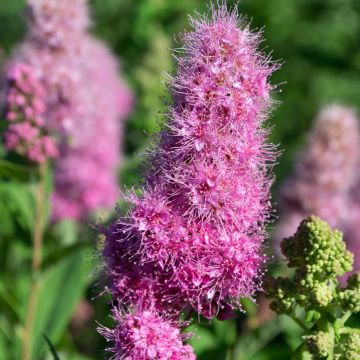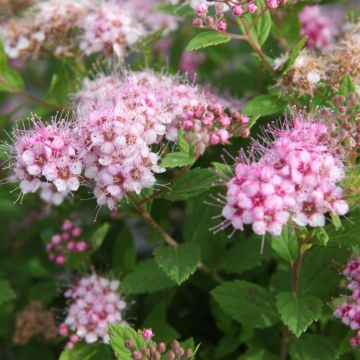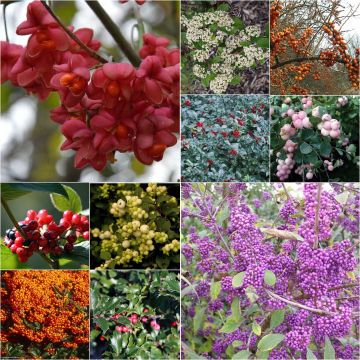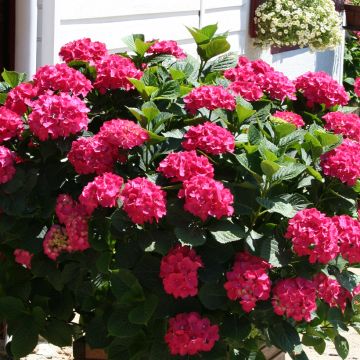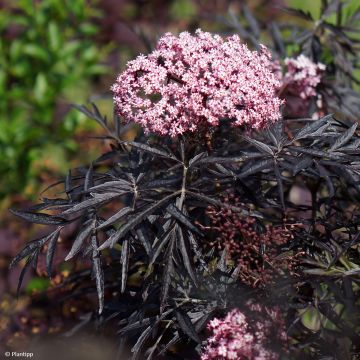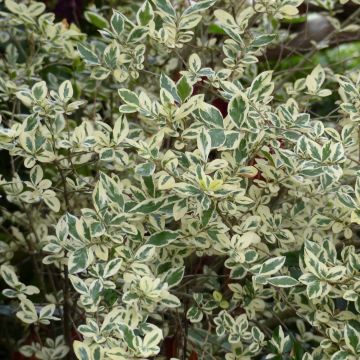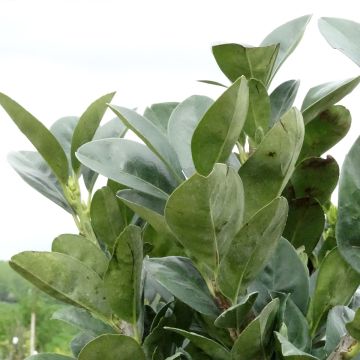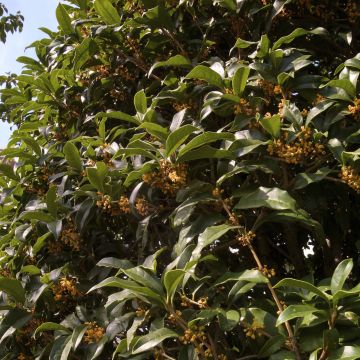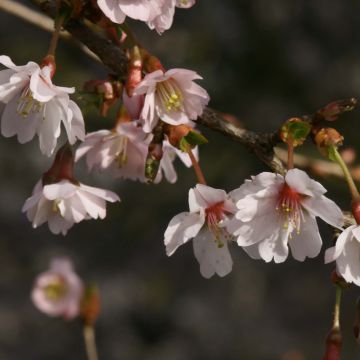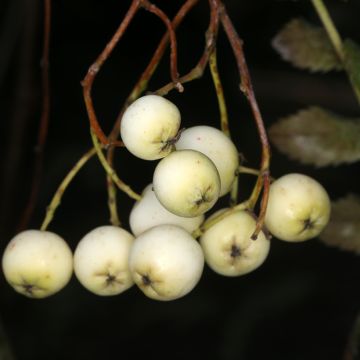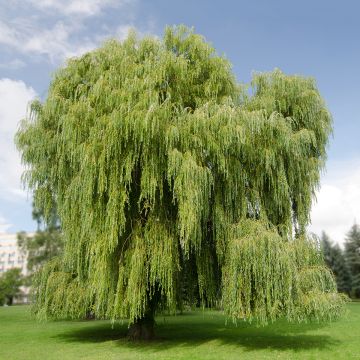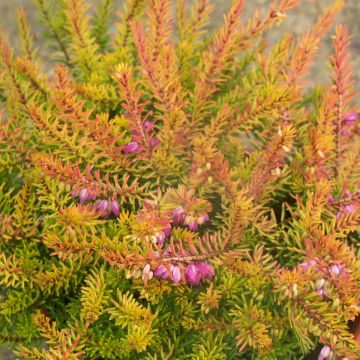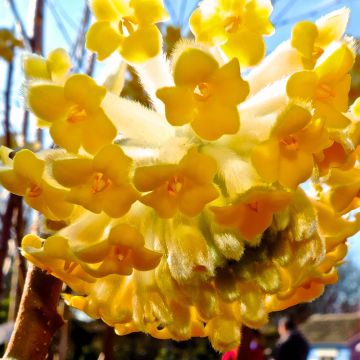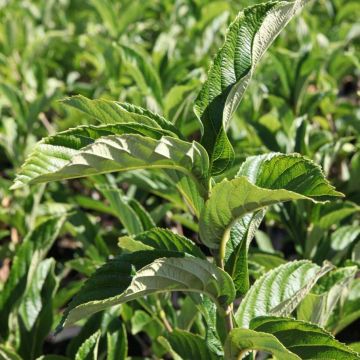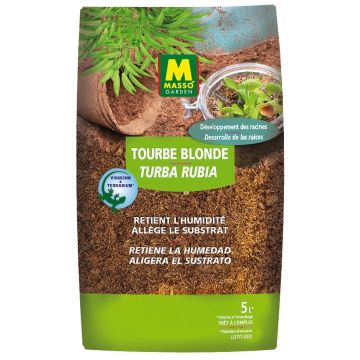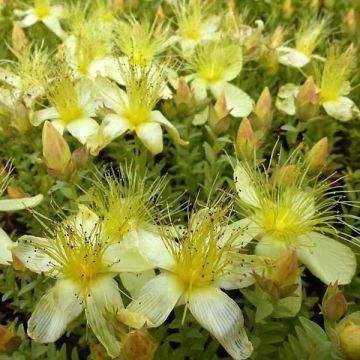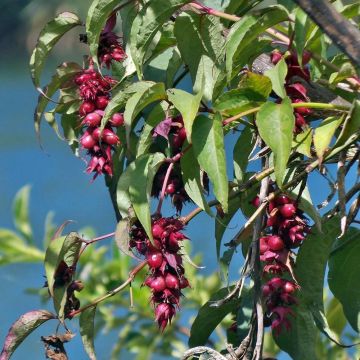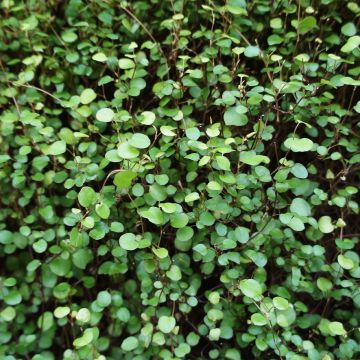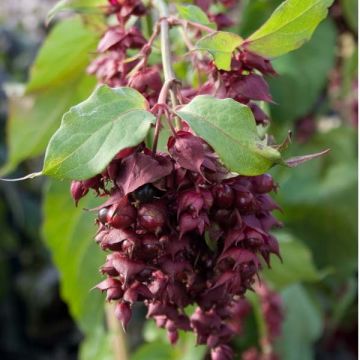Shipping country and language
Your country of residence may be:
Your country of residence is:
For a better user experience on our website, you can select:
Your shipping country:
Andorra
Austria
Belgium
Bulgaria
Canada
Chile
Croatia
Cyprus
Czechia
Denmark
Estonia
Finland
France
Germany
Greece
Hungary
Iceland
Ireland
Italy
Latvia
Lithuania
Luxembourg
Malta
Monaco
Netherlands
Poland
Portugal
Romania
Slovakia
Slovenia
Spain
Sweden
Switzerland
United Kingdom
We only deliver seed and bulb products to your country. If you add other products to your basket, they cannot be shipped.
Language:
French
German
Spanish
English
My Account
Hello
My wish lists
Plantfit
Log in / Register
Existing customer?
New customer?
Create an account to track your orders, access our customer service and, if you wish, make the most of our upcoming offers.
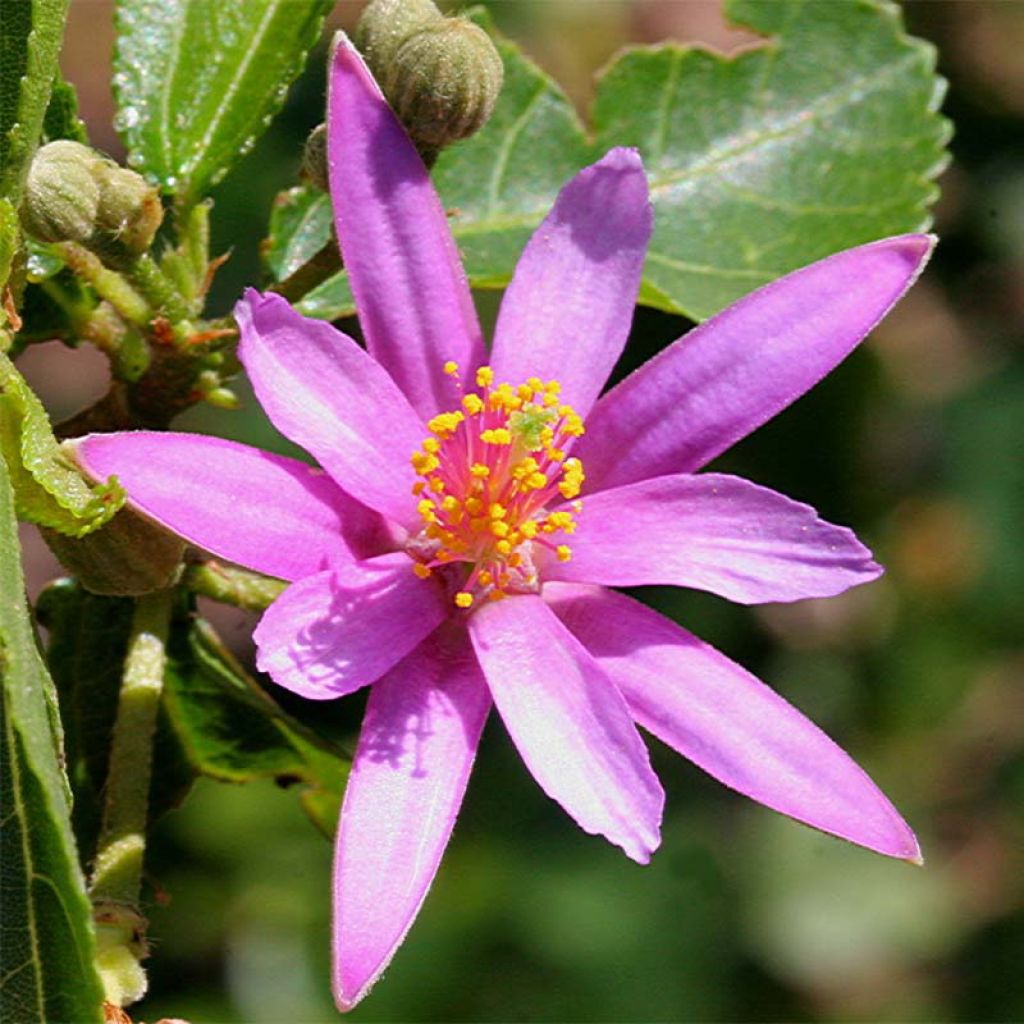

Grewia occidentalis
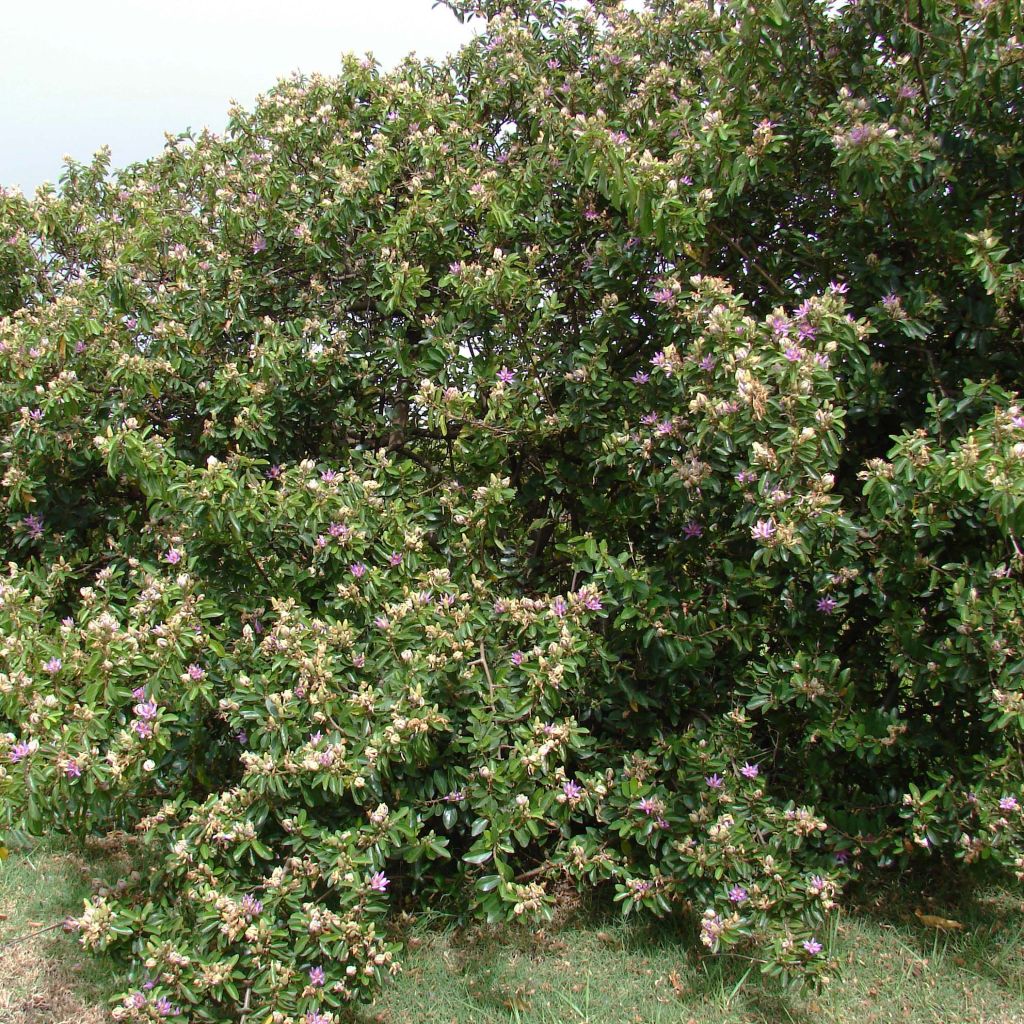

Grewia occidentalis
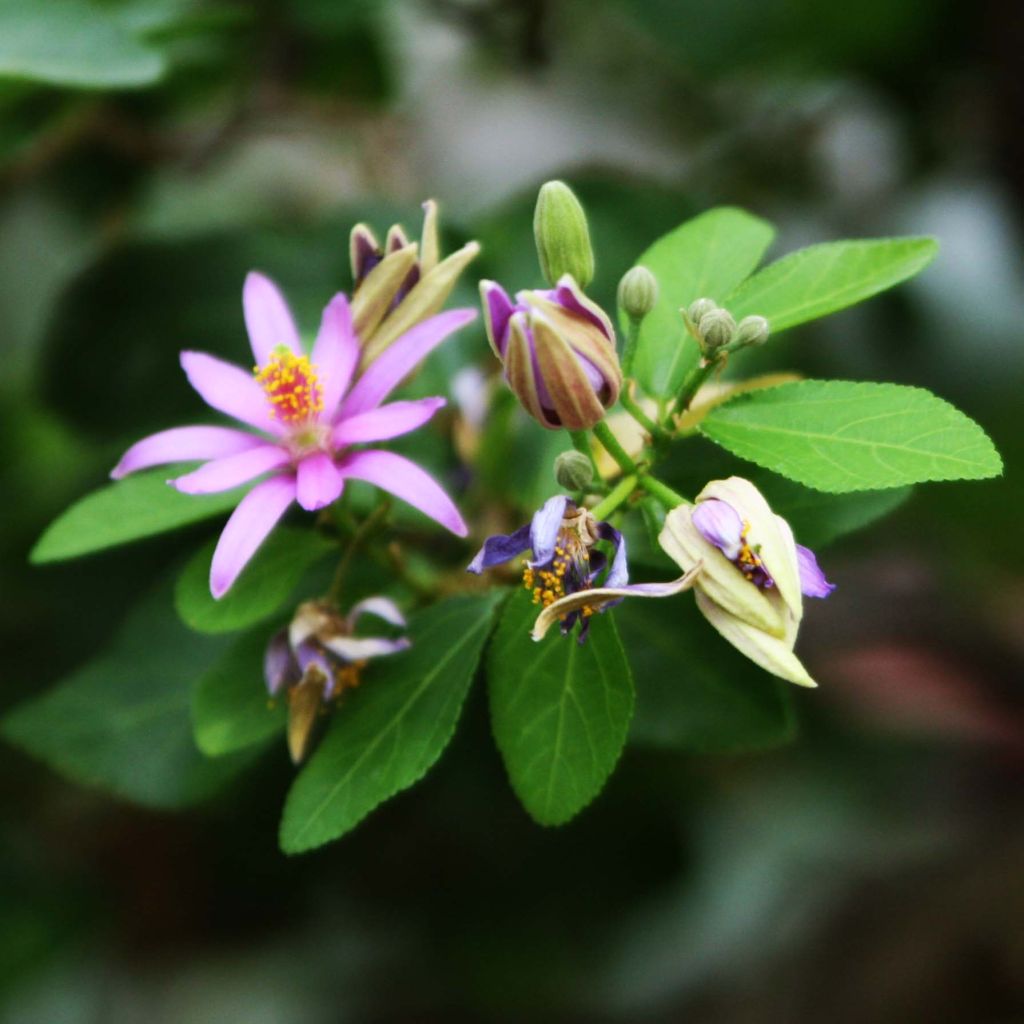

Grewia occidentalis
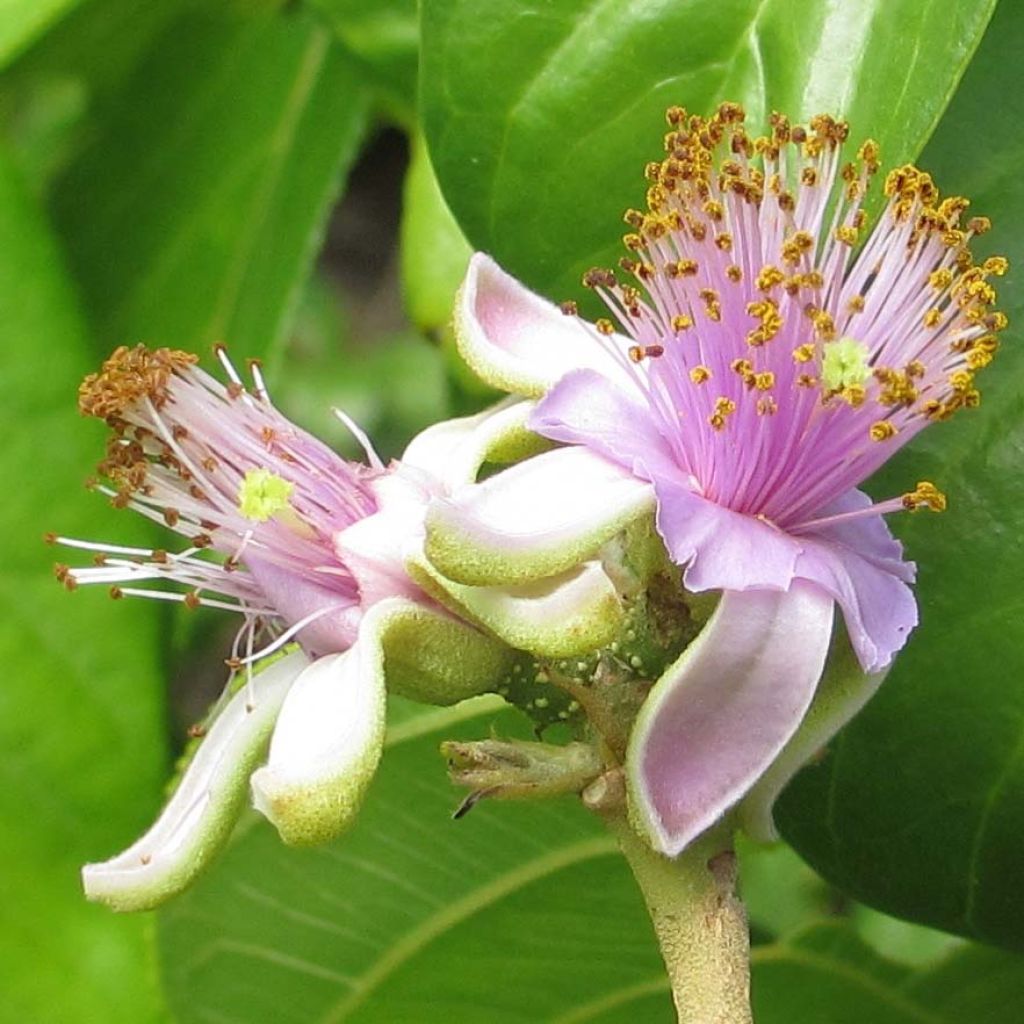

Grewia occidentalis
Grewia occidentalis
Grewia occidentalis
African starbush
Beautiful specimen, I hope the bush will bring us a lot of satisfaction and good growth, and plenty of flowers for the first year.
remy, 30/04/2021
Why not try an alternative variety in stock?
View all →Order in the next for dispatch today!
Dispatch by letter from €3.90.
Delivery charge from €5.90 Oversize package delivery charge from €6.90.
More information
This item is not available in your country.
Schedule delivery date,
and select date in basket
This plant carries a 24 months recovery warranty
More information
We guarantee the quality of our plants for a full growing cycle, and will replace at our expense any plant that fails to recover under normal climatic and planting conditions.
From €5.90 for pickup delivery and €6.90 for home delivery
Express home delivery from €8.90.
Does this plant fit my garden?
Set up your Plantfit profile →
Description
Grewia occidentalis is a South African bush that should be seen more often in gardens with mild climates or by the seaside. Vigorous and branching and as wide as it is tall, it is adorned with elegant glossy foliage that persists more or less depending on the severity of the winter and a profusion of small star-shaped flowers in a slightly mauve pink throughout the summer. Apart from its low frost resistance (down to -6°C), Grewia occidentalis is not difficult to grow in full sun or partial shade, in any well-drained garden soil, even dry in summer. It easily integrates into a flowering hedge, can be displayed near a path, or nestled against a wall for protection, or even in a large pot on the terrace, to be stored indoors in cold regions during winter.
Grewia occidentalis (or crossberry) is classified in the family Tiliaceae, like the lime tree, or in the family Malvaceae, like Hibiscus and mallow. It is native to southern Africa, where it can be found in very diverse environments, up to Mozambique in the north and inland to Zimbabwe. It grows in the arid region of the Karoo, on coastal dunes, in evergreen forests of African mountains but also in wooded meadows, often under the cover of trees. In the wild, it can reach a height of 3m (9 ft 10 in), but in gardens with mild climates, it will usually reach a height of 1.50m (4 ft 11 in), or even 2m (6 ft 7 in) in all directions.
It has a bushy, spreading habit, carried by long flexible branches, and its growth is rather fast. It flowers for a long time, from June to August-September. The buds are covered in fuzz and grouped in small clusters in the axils of the leaves. Each flower, measuring 1.5 to 3cm (0.6 to 1.2 in) in diameter, is composed of 10 fairly narrow mauve-pink petals arranged in a staggered pattern in two rows. The centre of the corolla is occupied by a column of very bright yellow-orange stamens. The insect-pollinated flowers transform into edible fruits, with 4 lobes, ranging from shiny reddish-brown to light violet when ripe. They can persist on the tree for long periods if they escape the appetite of birds. The foliage of Grewia occidentalis is abundant and ornamental and persists during mild winters, down to -3°/-4°C. It consists of entire, ovate, rough leaves, sometimes hairy, with toothed edges, measuring 7-8cm (2.8-3.1 in) long. They are a fairly dark green colour, with a glossy appearance. This bush is capable of regrowing from the crown after short freezes of around -6°C if protected and the soil remains relatively dry. The root system of this bush is not aggressive, allowing it to be planted near the house.
Grewia occidentalis will thrive in many regions spared from severe frosts. It appreciates bright, warm exposures, and can tolerate light shade in southern regions. It can be used as a medium-sized hedge, combined with bush mallow, Phymosia umbellata, Berberis Atropurpurea for foliage contrast, Polygala, or even with a tree clover (Lespedeza thunbergii) that will accompany its flowering until the end of summer. It will also be splendid as a standalone plant or at the back of a perennial bed composed of autumn asters or shrubby salvias with blue flowers. In colder regions, it will majestically occupy a large container on the terrace or balcony during the warmer seasons and will be sheltered indoors in a bright location, protected from severe frosts over winter.
The berries of Grewia occidentalis are consumed locally, fresh or raw. After fermentation, they are used in the production of traditional beer and are mixed with goat's milk to make berry yoghurt.
Grewia occidentalis in pictures
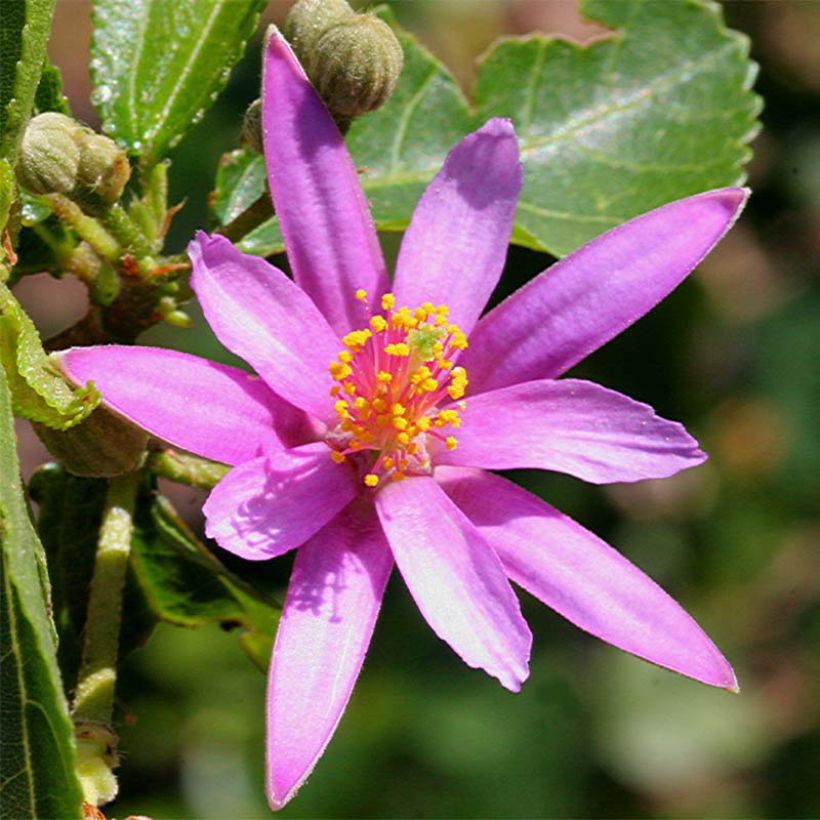

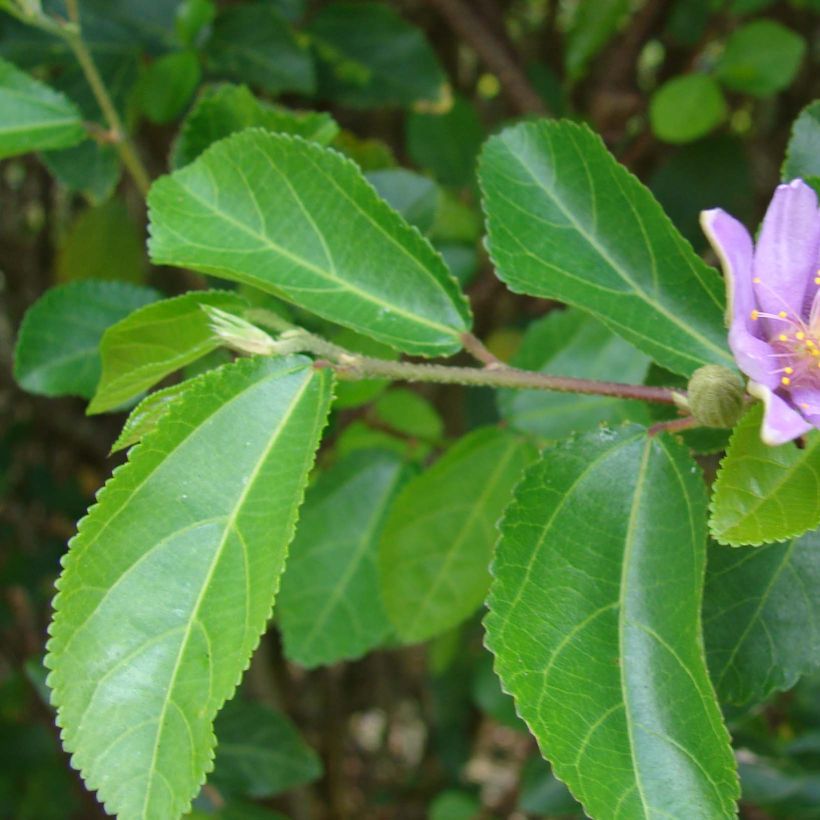

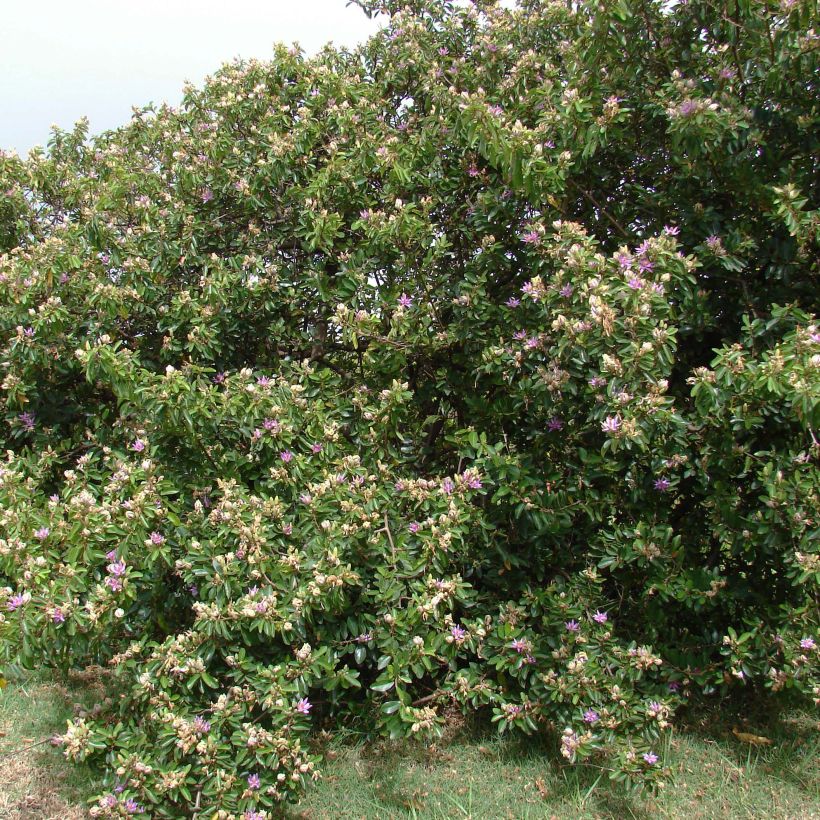

Plant habit
Flowering
Foliage
Botanical data
Grewia
occidentalis
Tiliaceae (Malvaceae)
African starbush
South Africa
Other Shrubs A to Z
Planting and care
Plant the Grewia occidentalis in spring or early autumn in a very mild climate. Choose a sunny location, or partial shade in southern regions. Install it in ordinary but very well-drained, deep, loose, and fertile soil. While it tolerates summer drought once established, it will be more floriferous in summer in soil that remains slightly moist. The cold resistance of this bush (-6°C (21.2 °F)) will be better if the soil remains dry in winter: for the first two years, make sure to protect the crown in winter with a thick mulch. It thrives in slightly acidic, neutral, or slightly chalky soil. Dig a deep planting hole and add some compost and coarse sand or gravel to improve the soil quality if necessary. Water abundantly after planting and during the first two summers in case of prolonged drought. This bush is quite drought-tolerant once established, but a good watering every 15 days will be appreciated in dry regions. It seems to be ignored by slugs and snails and does not have any specific enemies or diseases.
Planting period
Intended location
Care
- , onOrder confirmed
Reply from on Promesse de fleurs
Summer-flowering shrubs
Haven't found what you were looking for?
Hardiness is the lowest winter temperature a plant can endure without suffering serious damage or even dying. However, hardiness is affected by location (a sheltered area, such as a patio), protection (winter cover) and soil type (hardiness is improved by well-drained soil).

Photo Sharing Terms & Conditions
In order to encourage gardeners to interact and share their experiences, Promesse de fleurs offers various media enabling content to be uploaded onto its Site - in particular via the ‘Photo sharing’ module.
The User agrees to refrain from:
- Posting any content that is illegal, prejudicial, insulting, racist, inciteful to hatred, revisionist, contrary to public decency, that infringes on privacy or on the privacy rights of third parties, in particular the publicity rights of persons and goods, intellectual property rights, or the right to privacy.
- Submitting content on behalf of a third party;
- Impersonate the identity of a third party and/or publish any personal information about a third party;
In general, the User undertakes to refrain from any unethical behaviour.
All Content (in particular text, comments, files, images, photos, videos, creative works, etc.), which may be subject to property or intellectual property rights, image or other private rights, shall remain the property of the User, subject to the limited rights granted by the terms of the licence granted by Promesse de fleurs as stated below. Users are at liberty to publish or not to publish such Content on the Site, notably via the ‘Photo Sharing’ facility, and accept that this Content shall be made public and freely accessible, notably on the Internet.
Users further acknowledge, undertake to have ,and guarantee that they hold all necessary rights and permissions to publish such material on the Site, in particular with regard to the legislation in force pertaining to any privacy, property, intellectual property, image, or contractual rights, or rights of any other nature. By publishing such Content on the Site, Users acknowledge accepting full liability as publishers of the Content within the meaning of the law, and grant Promesse de fleurs, free of charge, an inclusive, worldwide licence for the said Content for the entire duration of its publication, including all reproduction, representation, up/downloading, displaying, performing, transmission, and storage rights.
Users also grant permission for their name to be linked to the Content and accept that this link may not always be made available.
By engaging in posting material, Users consent to their Content becoming automatically accessible on the Internet, in particular on other sites and/or blogs and/or web pages of the Promesse de fleurs site, including in particular social pages and the Promesse de fleurs catalogue.
Users may secure the removal of entrusted content free of charge by issuing a simple request via our contact form.
The flowering period indicated on our website applies to countries and regions located in USDA zone 8 (France, the United Kingdom, Ireland, the Netherlands, etc.)
It will vary according to where you live:
- In zones 9 to 10 (Italy, Spain, Greece, etc.), flowering will occur about 2 to 4 weeks earlier.
- In zones 6 to 7 (Germany, Poland, Slovenia, and lower mountainous regions), flowering will be delayed by 2 to 3 weeks.
- In zone 5 (Central Europe, Scandinavia), blooming will be delayed by 3 to 5 weeks.
In temperate climates, pruning of spring-flowering shrubs (forsythia, spireas, etc.) should be done just after flowering.
Pruning of summer-flowering shrubs (Indian Lilac, Perovskia, etc.) can be done in winter or spring.
In cold regions as well as with frost-sensitive plants, avoid pruning too early when severe frosts may still occur.
The planting period indicated on our website applies to countries and regions located in USDA zone 8 (France, United Kingdom, Ireland, Netherlands).
It will vary according to where you live:
- In Mediterranean zones (Marseille, Madrid, Milan, etc.), autumn and winter are the best planting periods.
- In continental zones (Strasbourg, Munich, Vienna, etc.), delay planting by 2 to 3 weeks in spring and bring it forward by 2 to 4 weeks in autumn.
- In mountainous regions (the Alps, Pyrenees, Carpathians, etc.), it is best to plant in late spring (May-June) or late summer (August-September).
The harvesting period indicated on our website applies to countries and regions in USDA zone 8 (France, England, Ireland, the Netherlands).
In colder areas (Scandinavia, Poland, Austria...) fruit and vegetable harvests are likely to be delayed by 3-4 weeks.
In warmer areas (Italy, Spain, Greece, etc.), harvesting will probably take place earlier, depending on weather conditions.
The sowing periods indicated on our website apply to countries and regions within USDA Zone 8 (France, UK, Ireland, Netherlands).
In colder areas (Scandinavia, Poland, Austria...), delay any outdoor sowing by 3-4 weeks, or sow under glass.
In warmer climes (Italy, Spain, Greece, etc.), bring outdoor sowing forward by a few weeks.

